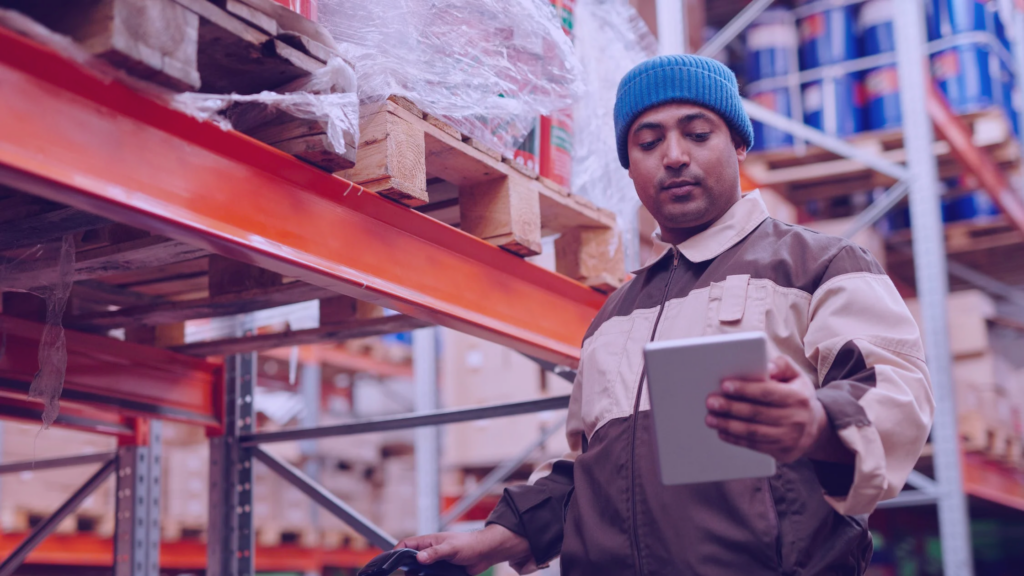In an era where the digital revolution touches every corner of our lives, labor-intensive manufacturing settings are no exception. Even the most hands-on, gritty work environments are beginning to feel the transformative power of technology. But what does this fusion of manual labor and cutting-edge tech look like for the blue-collar worker? Dive with us into the future of workplace technology in these settings and discover what’s on the horizon.
Augmented Reality (AR) for Skill Enhancement
The Power of Overlay
Imagine a world where a worker, while fitting a component, sees real-time data or visual instructions overlaid onto the actual component through AR glasses. Augmented Reality is making this a reality. By superimposing digital information onto the physical world, AR can guide workers through complex tasks, reduce errors, and speed up processes.
Continuous On-the-Job Training
For blue-collar workers, AR means a shift from traditional training methods. Workers can receive real-time feedback and instructions, allowing for continuous on-the-job training and immediate skill enhancement.
Wearable Exoskeletons for Physical Support
A New Age of Support
The physical demands in labor-intensive manufacturing can take a toll on the human body. Enter wearable exoskeletons: these are devices worn by workers to assist and augment their physical strength, reducing strain and fatigue. Whether it’s lifting heavy objects or performing repetitive tasks, exoskeletons promise to make the job easier and safer.
Harmonizing Man and Machine
For the blue-collar worker, this technology doesn’t replace, but enhances their capabilities. It means longer productive hours, reduced risk of injuries, and a fusion of human dexterity with machine strength.
IoT-Driven Predictive Maintenance
Smart Machines that Communicate
The Internet of Things (IoT) is enabling machines to “speak” to one another and to human operators. In the context of manufacturing, this translates to machines that can predict when they’ll break down or when a part needs replacement. This proactive approach minimizes downtime and maintains the flow of production.
Blue-Collar Tech Interactions
For the factory worker, this means interacting with machines in a more intuitive manner. It also entails responding to machine “alerts” and understanding the nuances of what the machine data indicates, leading to more informed decision-making on the factory floor.
AI-Enhanced Quality Control
Precision Beyond Human Limits
Artificial Intelligence (AI) is taking quality control to unprecedented levels. Advanced vision systems combined with machine learning algorithms can detect minute defects that might be missed by the human eye, ensuring products meet the highest standards.
The Role of the Human Touch
While AI handles the precision inspections, blue-collar workers shift to supervisory and intervention roles. They’re responsible for training the AI (by feeding it examples), acting on its findings, and providing the irreplaceable human touch in quality assurance.
Collaborative Robots (Cobots) on the Floor
Partners in Production
Cobots, or collaborative robots, are designed to work alongside humans, not replace them. These robots handle tasks that are dangerous, repetitive, or particularly strenuous, ensuring human workers are free to focus on more intricate, value-added tasks.
Synergizing Efforts
For workers, cobots represent partners. This means learning to operate, program, and work in tandem with these robots. As cobots become commonplace, workers will find their roles interdependent with technology, leading to a harmonious blend of man and machine.
The digital wave sweeping across labor-intensive manufacturing environments signifies not the replacement, but the enhancement of the blue-collar workforce. As tech innovations streamline operations and enhance worker capabilities, the future beckons with promises of a safer, more efficient, and increasingly skilled world of manufacturing. For the blue-collar worker, it’s a world filled with opportunities to grow, adapt, and thrive.

